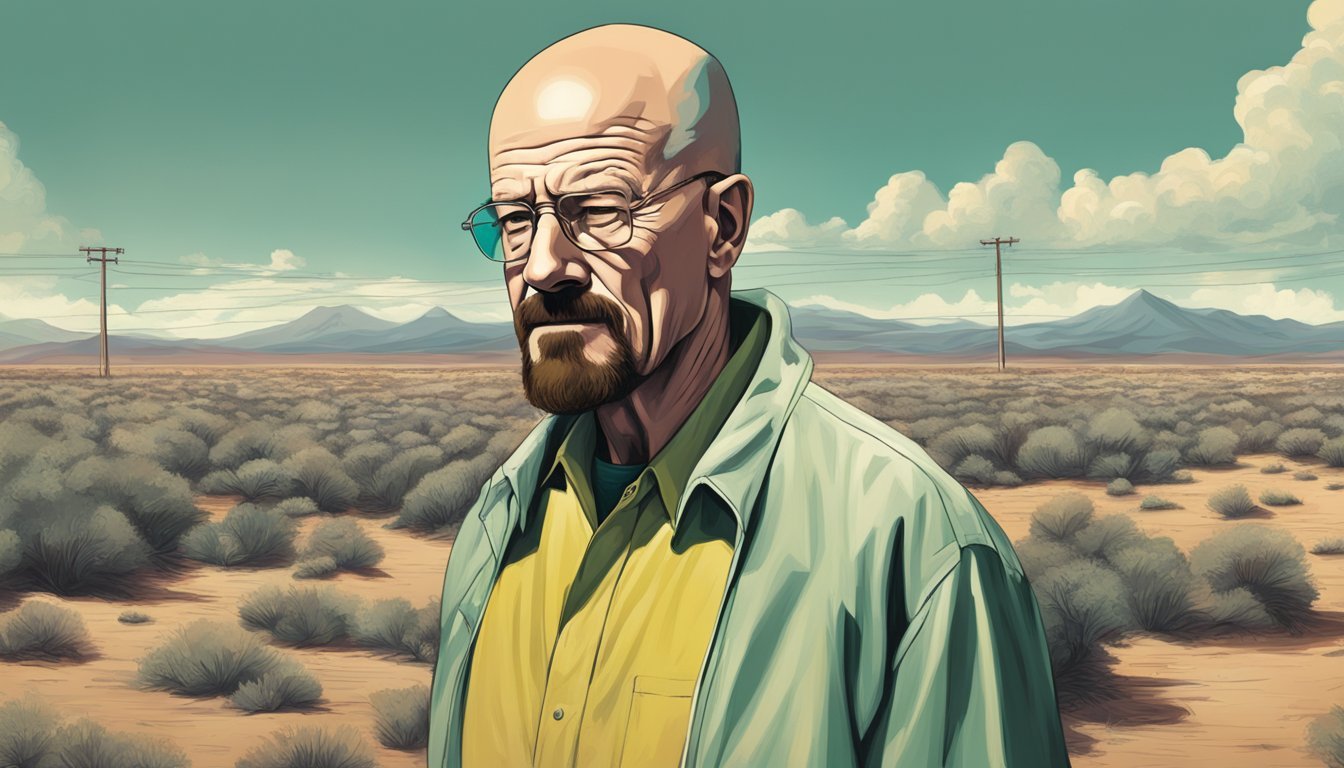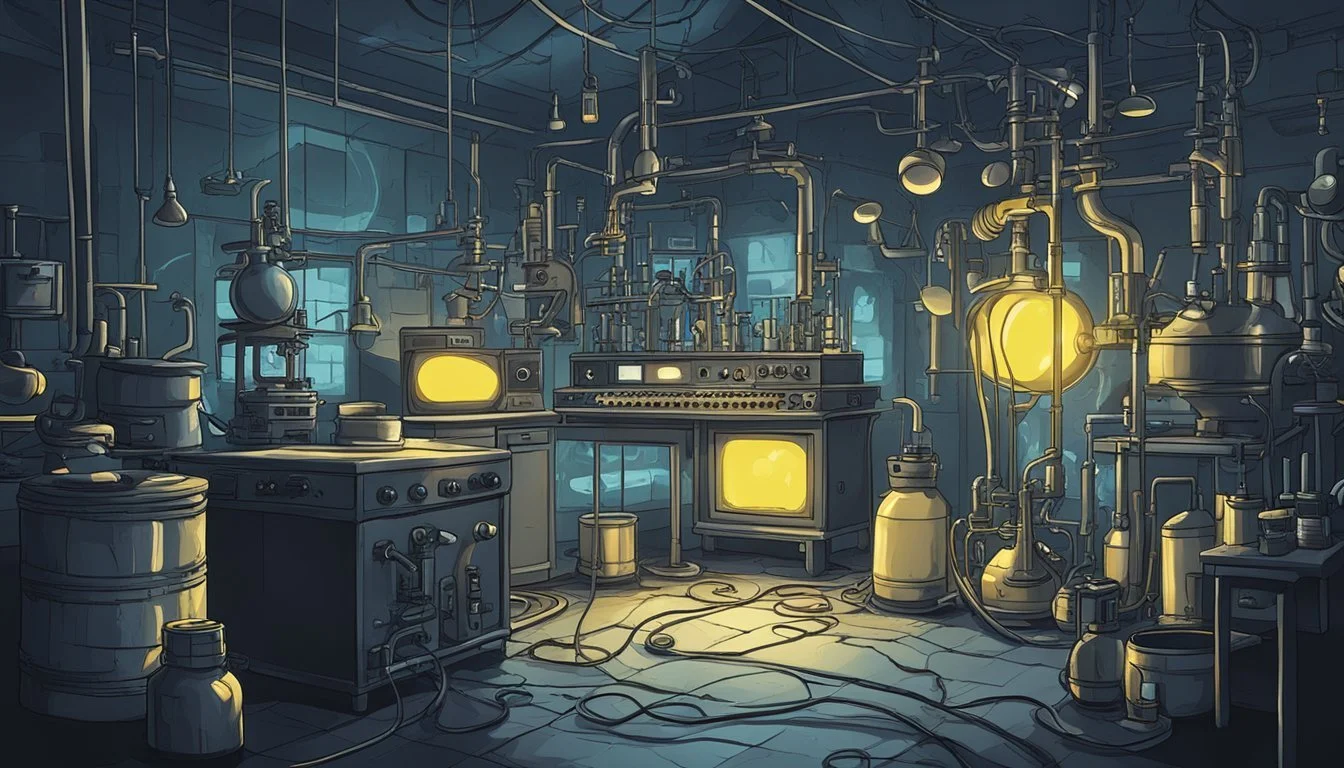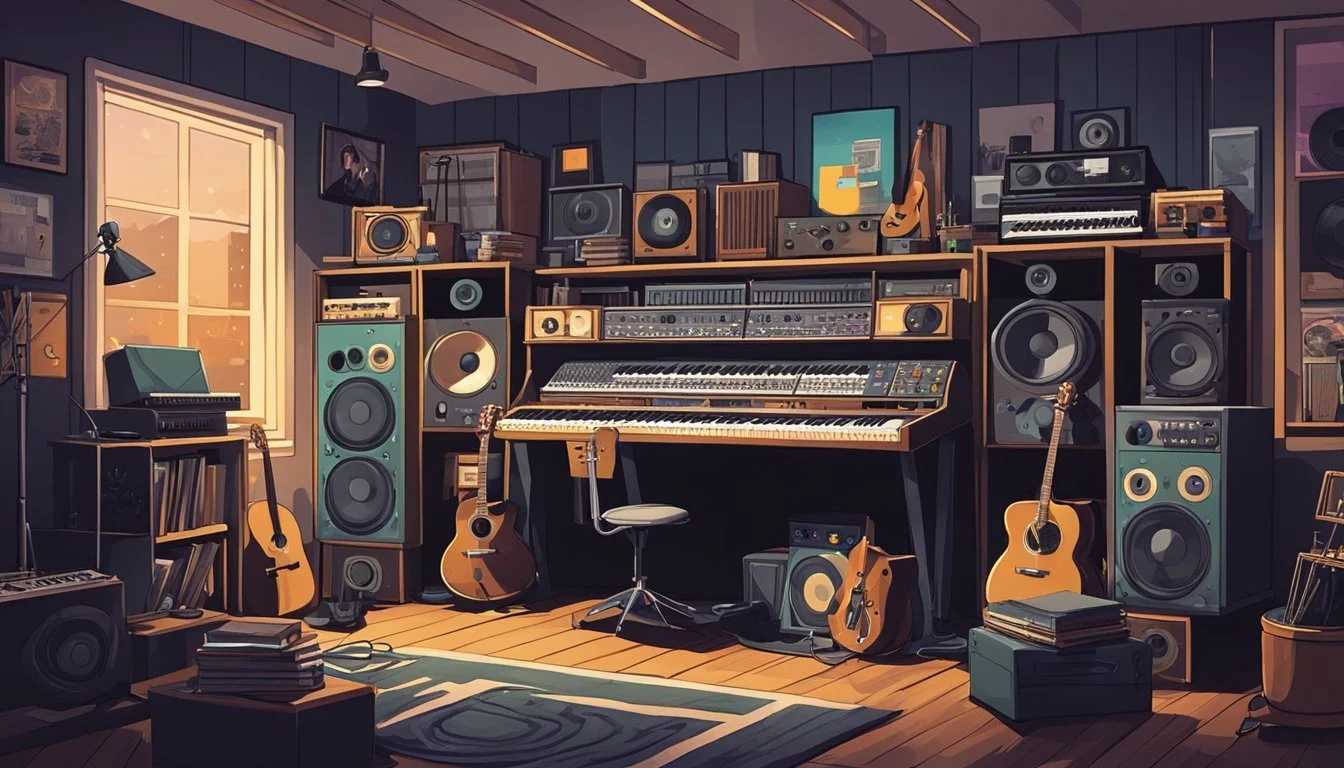Breaking Bad's Music: Scoring the Descent into Darkness
A Sonic Journey Through Walter White's Transformation
Breaking Bad's music played a crucial role in amplifying the show's descent into darkness. The original score, composed by Dave Porter, set the tone for Walter White's transformation from mild-mannered chemistry teacher to ruthless drug kingpin. Porter's haunting melodies and atmospheric soundscapes became an integral part of the series' identity, heightening tension and emotion throughout its five-season run.
The Breaking Bad soundtrack masterfully blended original compositions with carefully selected popular songs to create a rich auditory experience. Porter's main title theme, with its twangy guitars and ominous percussion, immediately evoked the show's southwestern setting and moral ambiguity. As the series progressed, the score evolved to reflect the characters' increasingly dire circumstances and ethical compromises.
Beyond the original score, Breaking Bad's music supervisors curated an eclectic mix of existing tracks that enhanced pivotal scenes. From upbeat montages set to quirky tunes to heart-wrenching moments underscored by melancholic ballads, each musical choice added depth to the storytelling. This combination of original and licensed music created a sonic landscape as complex and memorable as the show's visual elements.
The Role of Music in Breaking Bad
Music plays a crucial part in shaping the atmosphere and emotional impact of Breaking Bad. From the iconic title theme to the carefully selected score, sound elevates key moments and enhances character development throughout the series.
Defining the Sonic Landscape
Dave Porter, Breaking Bad's composer, crafted a distinct musical identity for the show. His twangy, percussive title theme instantly sets the tone for each episode.
Porter utilized a mix of electronic and acoustic instruments to create the unique sound palette. Synthesizers like the ARP 2600 and Oberheim Matrix-12 feature prominently in his compositions.
The score often incorporates Southwestern desert influences, reflecting the New Mexico setting. Sparse, atmospheric cues build tension during quiet moments, while driving rhythms underscore action sequences.
Themes of Transformation and Descent
The music of Breaking Bad mirrors Walter White's transformation into Heisenberg. As the character descends into darkness, the score evolves to reflect his changing identity.
Early episodes feature more traditional orchestral elements. As the series progresses, Porter introduces harsher electronic textures and dissonant tones to match Walt's moral decay.
Recurring musical motifs are associated with key characters and plot points. The Heisenberg theme, with its menacing low brass, signals Walt's criminal persona taking control.
Licensed songs are used sparingly but effectively, often providing ironic commentary on scenes. The placement of music is deliberately restrained, making its impact more powerful when employed.
Key Musical Moments in Breaking Bad
Breaking Bad's masterful use of music elevated pivotal scenes and character arcs throughout the series. Carefully selected tracks and original compositions amplified emotional impact and narrative tension.
Iconic Tracks and Their Narrative Impact
"Baby Blue" by Badfinger plays as Walt surveys his meth lab one final time in the series finale "Felina." This song choice poignantly captures Walt's complicated relationship with his life's work. In the pilot episode, Walt and Jesse's first cook is accompanied by "Out of Time Man" by Mick Harvey, setting an ominous tone.
The montage of Walt and Jesse's expanding operation in "Gliding Over All" features "Crystal Blue Persuasion" by Tommy James and the Shondells. This upbeat track ironically contrasts with the illegal and dangerous nature of their enterprise.
"Face Off" ends with "Goodbye" by Apparat as Gus Fring meets his explosive demise. The haunting melody underscores the gravity of this turning point in Walt's descent into villainy.
Music Accompanying Character Developments
Jesse's breakdown after Jane's death is scored with somber strings, highlighting his guilt and grief. This musical cue marks a crucial moment in Jesse's character arc.
"The Long Walk Alone (Heisenberg's Theme)" plays as Walt fully embraces his Heisenberg persona. The track's menacing tones reflect Walt's transformation from a mild-mannered teacher to a ruthless drug lord.
In "Crawl Space," dissonant, horror-like sounds accompany Walt's maniacal laughter. This unsettling musical choice emphasizes Walt's mental unraveling and loss of control.
The absence of music during Jesse's captivity scenes in later seasons creates a stark, oppressive atmosphere. This silence effectively conveys Jesse's isolation and despair.
Dave Porter and the Original Score
Dave Porter's original score for Breaking Bad elevated the show's intensity and emotional depth. His compositions seamlessly blended with the series' narrative, enhancing key moments and character arcs.
Porter's Creative Process and Inspirations
Porter approached each episode with fresh ears, crafting unique sounds to match the show's evolving tone. He drew inspiration from the New Mexico desert landscape, incorporating ambient textures and unconventional instruments. Porter often used distorted guitar tones and electronic elements to create an unsettling atmosphere.
His creative process involved close collaboration with showrunner Vince Gilligan. They discussed character motivations and plot developments to ensure the music aligned with the story's themes. Porter experimented with unusual percussion and synthesizers to produce distinctive sonic palettes for different characters and situations.
Standout Score Pieces Throughout the Series
"The Cousins" theme stands out for its menacing, percussive quality. Porter used tribal drums and eerie whistles to convey the hitmen's ruthless nature. Another notable piece, "Cleaning House," accompanied tense montages with pulsing electronic beats and dissonant tones.
For Walt's final moments in "Granite State," Porter created a haunting piano melody that captured the character's isolation and desperation. The "Parking Garage Standoff" scene featured a heart-pounding score that intensified the suspense.
Porter's work on "Searching for Jesse" combined atmospheric drones with subtle melodic elements, reflecting the mix of danger and emotion in the sequence. His ability to craft memorable themes enhanced Breaking Bad's most pivotal scenes.
Songs That Defined Breaking Bad's Ethos
Breaking Bad's soundtrack amplified the show's themes and character development through carefully selected songs. The music choices reflected Walter White's transformation and the series' dark tone.
Strategic Use of Popular Songs
"Crystal Blue Persuasion" by Tommy James and the Shondells played during a montage of Walt's expanding meth empire. Its upbeat melody contrasted with the illegal activities on screen. "Baby Blue" by Badfinger served as the perfect series finale song, referencing Walt's blue meth and his ultimate fate.
"A Horse with No Name" by America accompanied Walt's desert drives, symbolizing his journey into lawlessness. "DLZ" by TV on the Radio underscored Walt's growing confidence and intimidation tactics in a pivotal scene with rival dealers.
Music That Mirrors Walter White's Journey
"Negro y Azul" by Los Cuates de Sinaloa, a narcocorrido ballad, chronicled the legend of Heisenberg. This song highlighted Walt's growing notoriety in the drug world. "Freestyle" by Taalbi Brothers intensified tense moments, particularly during high-stakes cook scenes.
"Enchanted" by The Platters played ironically as Walt contemplated his choices, emphasizing the disparity between his old life and new criminal persona. "We Are Born When We Die" by Apollo Sunshine accompanied scenes of Walt's desperation, reflecting his tumultuous transformation.
The Musical Evolution Across Seasons
Breaking Bad's music evolved dramatically as the show progressed, mirroring the characters' descent into darkness. The score and song choices became increasingly intense and complex, reflecting the growing stakes and moral ambiguity.
Seasonal Shifts in Musical Themes
Season 1 introduced a sparse, Western-tinged score that captured the desolate Albuquerque setting. As Walter White's criminal empire grew, the music became more ominous and electronic.
Season 3 marked a notable shift, with tracks like "Crawl Space" using dissonant tones to convey Walt's mental unraveling. The percussive "Half Measure" signaled escalating danger.
By "Granite State" in the final season, the score had transformed into a bleak, minimalist soundscape matching Walt's isolation. "Felina" brought the musical journey full circle with callbacks to earlier themes.
Memorable Musical Introductions to New Characters
Breaking Bad used distinctive musical cues to establish new characters. The Cousins' arrival in season 3 was heralded by the menacing "The Cousins," a track mixing mariachi horns with industrial sounds.
Gus Fring's theme incorporated subtle piano melodies that hinted at his hidden depths. As his role expanded, so did his musical motifs.
Jesse's girlfriend Jane was introduced with dreamy, romantic tones that gradually darkened, foreshadowing her tragic arc.
Lydia's neurotic energy was captured by frenetic strings, while Todd's eerie calm was reflected in unsettling ambient sounds.
Licensed Tracks and Their Contributions
Breaking Bad's soundtrack blends original compositions with carefully selected licensed tracks. These songs enhance pivotal moments and deepen character portrayals throughout the series.
How Licensed Music Complements Original Score
Licensed tracks in Breaking Bad serve as powerful storytelling tools. They create emotional resonance and provide cultural context for key scenes. The mix of genres reflects the show's diverse characters and settings.
Popular songs often contrast with the tense original score. This juxtaposition heightens dramatic impact. Licensed music also helps establish time periods and locations within the narrative.
Some tracks become closely associated with specific characters or storylines. These musical cues help viewers connect emotionally with the unfolding drama.
Noteworthy Licensed Tracks in Key Scenes
"A Horse with No Name" by America plays as Walter White drives through the desert. This song underscores his isolation and growing detachment from society.
Gnarls Barkley's "Who's Gonna Save My Soul" accompanies Jesse's descent into drug addiction. The lyrics mirror his internal struggle and sense of hopelessness.
"Negro y Azul: The Ballad of Heisenberg" serves as both diegetic and non-diegetic music. This narcocorrido highlights Walter's growing infamy in the drug world.
"Baby Blue" by Badfinger plays during the series finale. Its lyrics about a special love perfectly capture Walter's final moments with his true love: his blue meth.
Musical Connections with Better Call Saul and El Camino
The Breaking Bad universe expanded sonically through its spin-offs. Composer Dave Porter crafted musical bridges between the original series and its offshoots, maintaining consistency while introducing fresh elements.
Shared Themes and Motifs
Porter wove familiar musical threads throughout Better Call Saul and El Camino. The iconic Breaking Bad theme made subtle appearances, evoking nostalgia and continuity.
Character-specific motifs crossed over between shows. Jimmy McGill's theme in Better Call Saul evolved as he transformed into Saul Goodman, echoing his Breaking Bad persona.
In El Camino, Jesse Pinkman's musical identity incorporated elements from his Breaking Bad journey. This sonic continuity reinforced the interconnected nature of the stories.
Expansion of the Franchise's Musical Identity
While honoring established sounds, Porter introduced new musical palettes for each spin-off. Better Call Saul's score featured more acoustic elements, reflecting its earlier time period and Jimmy's initial optimism.
El Camino's music blended Breaking Bad's tension with a cinematic scope. The film's score incorporated grander orchestrations to match its larger visual scale.
New character themes emerged in both productions. Kim Wexler in Better Call Saul and Todd Alquist in El Camino received distinct musical identities, enriching the franchise's sonic landscape.
Porter's evolving approach allowed each entry to feel fresh while maintaining a cohesive musical universe.
The Impact of Breaking Bad's Music on Popular Culture
Breaking Bad's musical choices resonated far beyond the show itself, influencing both television soundtracks and music consumption habits. The series' distinctive sonic palette left an indelible mark on pop culture.
Influence on TV Scores and Soundtracks
Breaking Bad's music became a template for future TV productions. The show's use of unexpected song choices and original compositions set a new standard for small-screen soundtracks.
Many subsequent series emulated Breaking Bad's approach of juxtaposing upbeat tunes with dark scenes. This technique created memorable moments that stuck with viewers long after episodes ended.
The success of Breaking Bad's soundtrack also led to increased collaboration between TV producers and musicians. More artists began viewing television as a viable platform for promoting their work.
Compilation Albums and Playlists
Breaking Bad's musical impact extended to the realm of music consumption. Madison Gate Records released official compilation albums featuring songs from the show. These collections became bestsellers, introducing viewers to lesser-known artists and tracks.
Streaming platforms saw a surge in Breaking Bad-inspired playlists. Fans curated collections of songs featured in pivotal scenes, allowing others to relive key moments through music.
Several tracks from the show entered WhatSong's lists of most featured TV songs. This exposure led to increased popularity for featured artists, with some songs climbing yearly top 50 charts after their Breaking Bad appearances.
The Creative Team Behind the Show's Music
Dave Porter served as the primary composer for Breaking Bad, working closely with creator Vince Gilligan to craft the show's distinctive sound. The music team also included skilled supervisors who selected existing tracks to complement Porter's original score.
Music Supervisors and Their Selection Processes
Thomas Golubic led the music supervision for Breaking Bad, carefully choosing songs to enhance key moments. He worked with AMC and the producers to license tracks that fit the show's tone and themes. Golubic's selections often provided ironic or poignant counterpoints to the on-screen action.
The supervisors aimed to find lesser-known tracks that viewers would associate with Breaking Bad. They balanced recognizable songs with obscure gems to create a unique musical identity. This process involved extensive listening sessions and negotiations with record labels.
Collaborations with Other Musicians and Composers
While Dave Porter composed most of the original score, he occasionally collaborated with other musicians to expand Breaking Bad's sonic palette. These partnerships allowed for experimentation with different instruments and styles.
Porter worked with instrumentalists to record live performances, adding depth to the electronic elements of his compositions. He also consulted with music editors like Eric Chun to seamlessly blend his score with the licensed tracks selected by the supervisors.
The collaborative approach extended to the show's iconic theme song. Porter created the brief but memorable tune, which was then expanded and refined through input from Gilligan and other members of the creative team.




